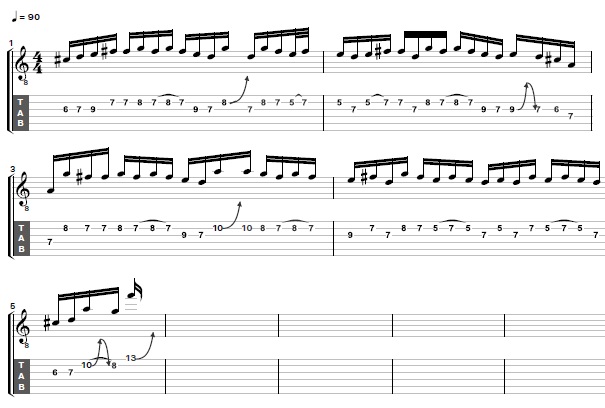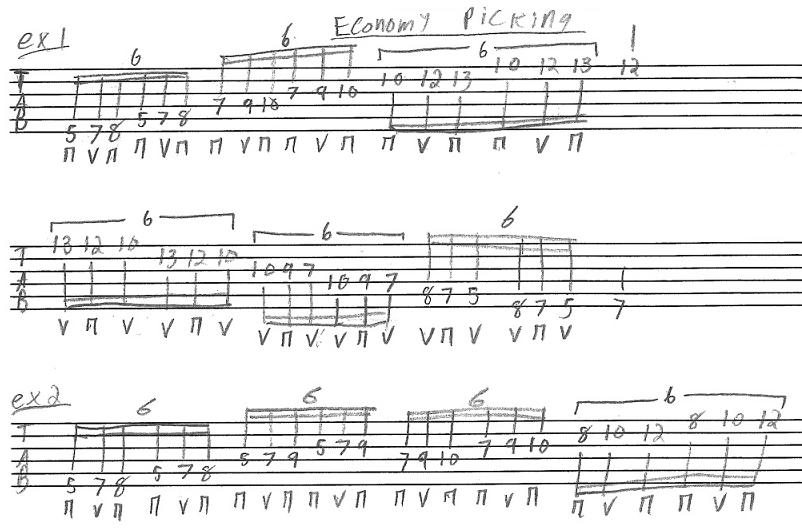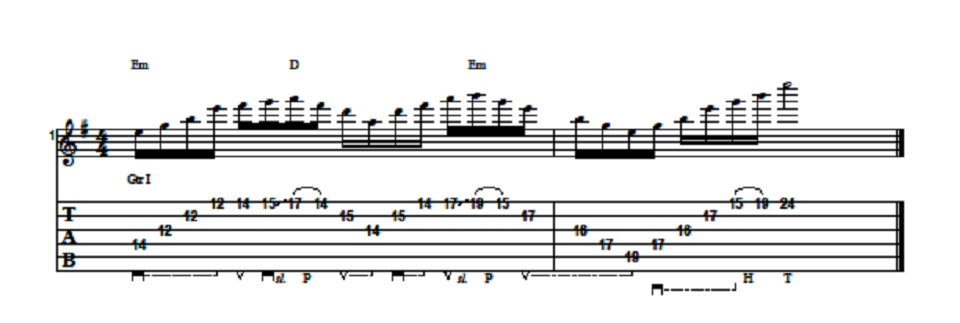How To Play More Than A Feeling Solo
In this Guitar Control lesson instructor Robert Baker, is going to show you how to play “More Than a Feeling Solo” by Boston on guitar. This song is so good and a total Classic. If you do not know how to play this song but what to learn a bunch of the main riffs of this song be sure to check out Robert’s other lesson video, How To Play Boston More Than a Feeling, for a breakdown of all of the main rhythm guitar parts.
This Solo is extremely iconic and a lot of fun to play. It has tons of killer melodies that almost sound like vocal lines topped with killer bends and lead guitar techniques. Let’s break it down.

Step 1: The Scales
Step one having the mindset and attitude of making the guitar sing. This Solo is very vocal it is extremely melodic and very beautiful. So, we want to have the mindset of making the guitar sing and have a voice, meaning adding special touches like vibrato and just your feel and attitude as you approach this classic solo. You have the option in this solo to sometimes opt to do a slide instead of a bend. It sounds like they are bending but Robert explains that it’s up to you what you prefer the sound of and how you want to embellish the note.
This solo has this very major, kind of mixolydian vibe going on, but definitely is based off the D Major scale. To play the D major scale start on the 10th fret 6th string, on the 6th string you go 10th fret, to 12th, to the 14th. 5th string is the same, 10th fret, 12th, and 14th. 4th string 11th fret to 12th to 14th, and same frets for the 3rd string. And on both the 2nd and 1st strings you play the 12th, 14th, and 15th frets.
Step 2: The Solo
To kick off this solo, Robert plays the 6th, 7th, and 9th frets one at a time all on the 3rd string. He uses his pointer for both the 6th and 7th frets and his ring finger for the 9th. By using his pointer on both the 6th and 7th frets he is able to drop his pointer down to the 2nd string to pick it twice for the next part where he picks the 7th fret 2nd string twice, then picks the 8th fret 2nd string once into a hammer on pull off from the 7th fret hammered on to the 8th and pulled off back to the 7th, all on the 2nd string still, a very quick trill. Then to the 9th fret 3rd string to the 7th fret 3rd string. For this next phrase you can either slide the 8th fret to the 10th to bend the 8th fret a whole step on the 3rd string.
Robert prefers the slide even though he mentions he believes Boston plays it with a bend. Both techniques will play the desired note, they just have a different feel in how they get there. The slide will sound sharper and quicker where the bend will have more attitude. Then back to the 7th fret on the 3rd string to the 8th and then 7th frets on the 2nd string. Then on the 2nd string you are going to hammer on the 5th fret to the 7th and pull off back to the 5th fret then moving to pick the 7th fret on the 3rd string. Ending this phrase with another hammer on from the 5th fret to the 7th on the 2nd string and picking the 7th fret 2nd string one more time after landing on it from the hammer on.
For the next part we also start on the 7th fret 3rd string, then 8th fret to the 7th fret on the 2nd string. Then hammer on the 7th fret to the 8th and pull back off to the 7th fret. This trill is a constant staple in this solo, like a motif. Then pick the 9th fret to the 7th fret both on the 3rd string, then bend the 9th fret 3rd string both up and down, and then pick the 7th fret and then the 6th, all again, on the 3rd string. Then pick the 7th fret 4th string twice, then slide to the 8th fret then the 7th on the 2nd string. There’s a little bit of a pause here.
Now back to the trill part on the 7th and 8th frets on the 2nd string, picking the 7th fret then the 8th then hammer on 7th fret to the 8th and pulling back off to the 7th fret all on the 2nd string. Then picking the 9th fret to the 7th on the 3rd string followed by a full step bend on the 2nd string 10th fret. Then pick the 10th fret 2nd string after the bend. Then pick the 8th fret 2nd string then the 7th fret 2nd string into our motif. The trill, 7th fret hammered on to the 8th and pulled back off to the 7th. Pick the 9th fret 3rd string and end by picking the 7th fret 2nd string.
This next part is kind of tricky. Directly after that lick pick the 7th fret 3rd string, then 8th fret 2nd string to the 7th string 2nd fret, then the motif, but on different frets, the 5th fret hammed on to the 7th pulled off to the 5th, all on the 2nd string, then pick the 7th fret 3rd string to the 5th fret 2nd string. Followed by the 7th fret on the 3rd string, 7th fret on the 2nd string, hammer on the 5th to 7th frets again and pull back off to the 5th fret all on the 2nd string ending by picking the 7th fret 3rd string, 6th fret 3rd string, back to the 7th fret 3rd string.
Now, go to the 10th fret 2nd string and bend a whole step, both up and down bringing it back into a pull off to the 8th fret. Then bend the 13th fret on the 1st string with lots of vibrato. These are harmony notes which can sound a little bit dull on their own , but are very powerful when you add the other guitar.
Recap: How To Play More Than A Feeling Solo
I hope you enjoyed learning how to play “More Than a Feeling Solo” by Boston. It is such a fun solo, there are so many parts and ways to play the same notes, remember to always feel free to put your own spin on a solo, and use the technique that you prefer. Use these lessons and these songs learning on how to play things that you like and finding your own style and voice as a musician and guitarist. Pay lots of attention in this one seeing which techniques you prefer.


